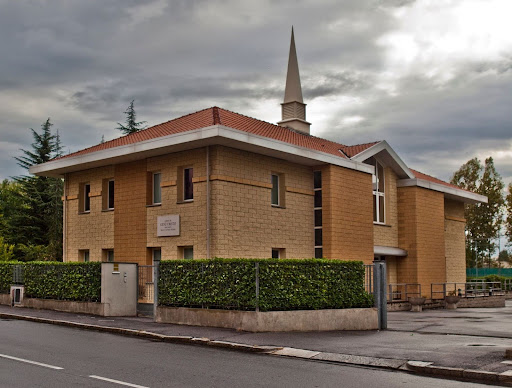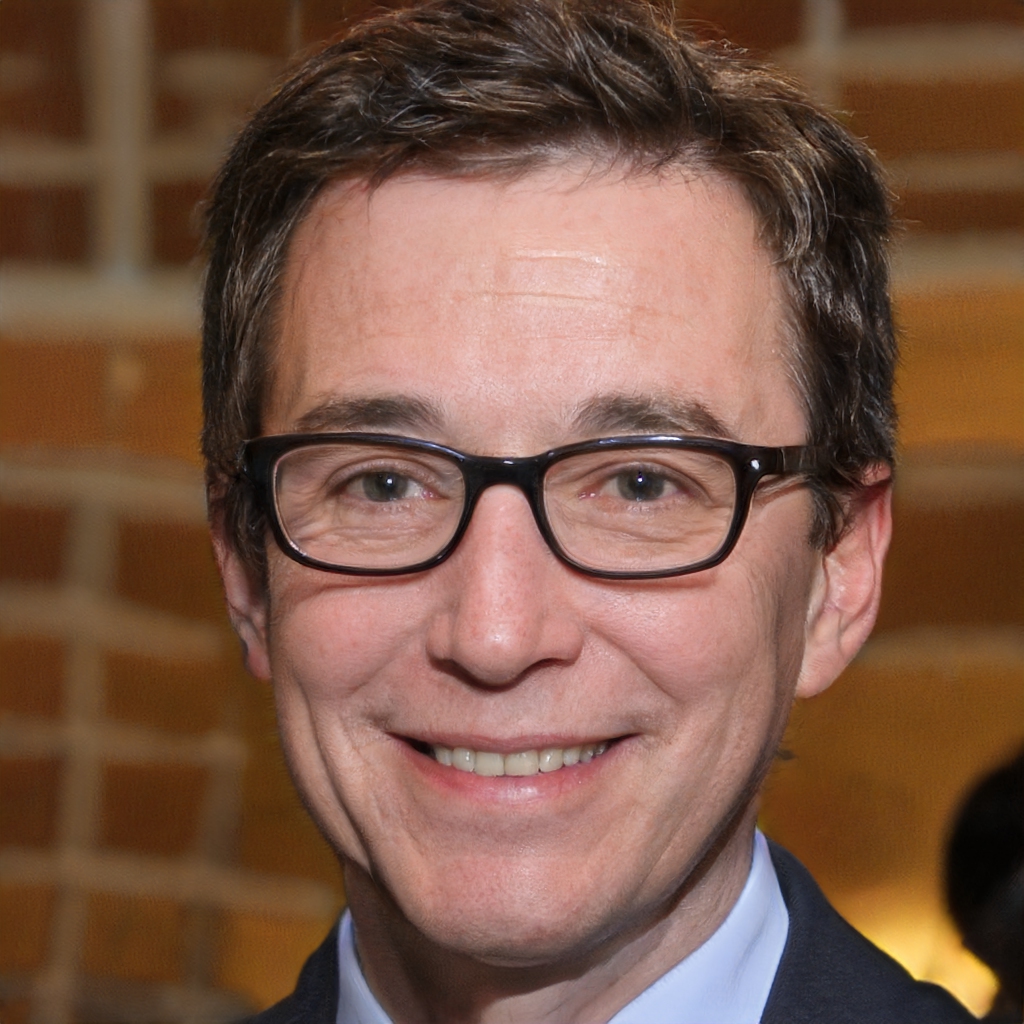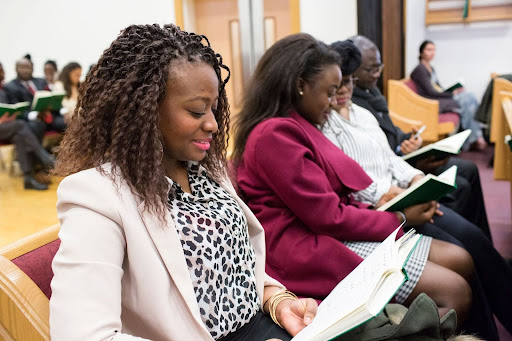Diversity In The Global Mormon Church
The Church of Jesus Christ of Latter-day Saints, commonly known as the Mormon or LDS Church, has experienced significant growth and diversification since its founding in 1830.
Author:Frazer PughReviewer:Dexter CookeJun 27, 20249.2K Shares237.2K Views

Diversity In The Global Mormon Church
The Church of Jesus Christ of Latter-day Saints, commonly known as the Mormon or LDS Church, has experienced significant growth and diversification since its founding in 1830. The church began in the northeastern United States. Now, the church has expanded globally, resulting in a diverse membership that spans cultures, languages, and socio-economic backgrounds. This diversity presents both opportunities and challenges for the church as it strives to maintain unity while respecting cultural differences.
Historical Context And Expansion
The LDS Church was founded by Joseph Smith in upstate New York. Its early history was marked by persecution and migration from New York, Ohio, Missouri, Illinois, eventually leading to the establishment of a headquarters in Utah. For much of the 19th and early 20th centuries, the church's membership was predominantly white and centered in the United States. However, missionary work has always been a fundamental aspect of the Mormon Church, and over the decades, this focus on proselytizing has significantly increased the church's global presence. However, Mormon financessuffered for many years because of the persecution, forced migration, and even financial mismanagement.
Growth In Latin America
One of the most notable areas of growth for the LDS Church has been Latin America. Countries such as Mexico, Brazil, and Argentina have seen substantial increases in membership. Brazil, in particular, stands out with over 1.4 million members, making it one of the largest LDS populations outside the United States. The church's success in these regions can be attributed to its active missionary efforts and the resonance of its family-centered teachings with local cultural values.
Expansion In Africa
Africa represents another significant area of growth. The LDS Church has established a strong presence in countries such as Nigeria, Ghana, and South Africa. In Nigeria and Ghana, the church has built temples, which are central to its religious practices. The African membership is characterized by high levels of faith and activity, with many members participating in church leadership roles. The church's emphasis on community support and self-reliance resonates well with African cultural values.
Asia's Growing Membership
In Asia, the LDS Church has seen notable growth in countries such as the Philippines, South Korea, and Japan. The Philippines has the second-largest LDS population in Asia, with over 800,000 members. The church's humanitarian efforts, including disaster relief and educational programs, have enhanced its reputation and facilitated its growth in the region. In countries with more restrictive religious environments, such as China, the church operates more discreetly, focusing on expatriate communities while complying with local laws.
European Diversity
Some of the first missionaries from the Mormon Church went to Europe, however, those that joined the church in this era of the 1800s, usually immigrated to Utah. Today, while the church has established a presence in nearly every European country, membership growth has been slower compared to other regions. However, countries such as the United Kingdom, Germany, and France have significant LDS communities. The church in Europe often deals with secularism and religious indifference, but a focus on community building and service has helped to established a membership in these areas.
Addressing Racial And Ethnic Diversity
The LDS Church has made efforts to address issues of racial and ethnic diversity, particularly given its historical context. In the past, the church faced criticism for its racial policies, such as the Mormon priesthood banon individuals of African descent, which was lifted in 1978. Since then, the church has worked to promote inclusivity and diversity within its ranks.
Leadership diversity is an ongoing focus. While the highest levels of church leadership remain predominantly American and white, there is increasing representation from other parts of the world. For example, apostles and general authorities from diverse backgrounds are being called, reflecting the global nature of the church's membership.
Cultural Adaptation And Unity
The global expansion of the LDS Church necessitates a careful balance between maintaining doctrinal consistency and adapting to local cultures. The church's core beliefs and practices remain the same worldwide, but cultural adaptations are made to ensure that the church feels relevant and welcoming to diverse populations. For instance, church services are conducted in local languages, and cultural customs are respected and integrated into church activities where appropriate.
One example of cultural adaptation is the incorporation of local music and dance in worship services, particularly in African and Latin American congregations. These practices help to make the church feel more inclusive and culturally relevant to its members. Additionally, the church places a strong emphasis on the family, which aligns well with the values of many cultures around the world.
Mormon Finances And Global Growth
Mormon Church financesplay a crucial role in its global expansion and support of diverse congregations. The church's financial model relies heavily on tithing, where members contribute 10% of their income. This system has provided the church with substantial resources to fund its global missionary efforts, build temples and meetinghouses, and support humanitarian projects.
The church's wealth, estimated to be in the tens of billions, allows it to operate extensive welfare and humanitarian programs worldwide. These programs include disaster relief, education, healthcare, and support for communities in need. For instance, the church's efforts in Africa have included building schools and providing clean water, significantly impacting local communities. In 2023, the Mormon Church spend 1.36 billion dollars in humanitarian aid in 191 countries and territories.
Challenges And Opportunities
The diversity within the LDS Church presents both challenges and opportunities. One of the main challenges is ensuring that church teachings and practices are understood and accepted across different cultures. This requires ongoing education and training for both church leaders and members. Additionally, the church must navigate varying socio-political environments, from the secularism of Europe to the authoritarian regimes in parts of Asia.
However, the church's diversity also presents significant opportunities. A diverse membership brings a wealth of perspectives and experiences that can enrich the church community. It also enhances the church's ability to serve and connect with people worldwide.
The Role Of Technology
Technology plays a crucial role in supporting the global diversity of the LDS Church. Online resources, including church websites, social media, and digital scriptures, are available in multiple languages, making it easier for members worldwide to access church teachings and stay connected. Virtual meetings and broadcasts of church conferences enable members from different countries to participate in global church events.
The Future Of Diversity In The LDS Church
Looking to the future, the LDS Church is likely to continue its expansion and diversification. The construction of temples in new regions, such as the recent announcements of temples in India and Russia, signals the church's commitment to serving its global membership. The focus on inclusivity and representation in leadership will likely increase, reflecting the diverse makeup of the church.
Conclusion
The global diversity of the LDS Church is a testament to its successful missionary efforts and the universal appeal of its teachings on family, community, and faith. As the church continues to grow, it faces the challenge of balancing unity with cultural adaptation. By embracing diversity and promoting inclusivity, the LDS Church can strengthen its global community and fulfill its mission to bring people together in faith. The future of the church lies in its ability to honor and integrate the rich cultural tapestry of its worldwide membership while maintaining its core doctrines and values.
Jump to
Diversity In The Global Mormon Church
Historical Context And Expansion
Growth In Latin America
Expansion In Africa
Asia's Growing Membership
European Diversity
Addressing Racial And Ethnic Diversity
Cultural Adaptation And Unity
Mormon Finances And Global Growth
Challenges And Opportunities
The Role Of Technology
The Future Of Diversity In The LDS Church
Conclusion

Frazer Pugh
Author
Frazer Pugh is a distinguished expert in finance and business, boasting over 6 years of experience. Holding an MBA in Finance from Stanford University, Frazer's credentials underscore his authority and expertise in the field.
With a successful track record in executive roles and as a published author of influential articles on financial strategy, his insights are both deep and practical.
Beyond his professional life, Frazer is an avid traveler and culinary enthusiast, drawing inspiration from diverse cultures and cuisines.
His commitment in delivering trustworthy analysis and actionable advice reflects his dedication to shaping the world of finance and business, making a significant impact through his work.

Dexter Cooke
Reviewer
Dexter Cooke is an economist, marketing strategist, and orthopedic surgeon with over 20 years of experience crafting compelling narratives that resonate worldwide.
He holds a Journalism degree from Columbia University, an Economics background from Yale University, and a medical degree with a postdoctoral fellowship in orthopedic medicine from the Medical University of South Carolina.
Dexter’s insights into media, economics, and marketing shine through his prolific contributions to respected publications and advisory roles for influential organizations.
As an orthopedic surgeon specializing in minimally invasive knee replacement surgery and laparoscopic procedures, Dexter prioritizes patient care above all.
Outside his professional pursuits, Dexter enjoys collecting vintage watches, studying ancient civilizations, learning about astronomy, and participating in charity runs.
Latest Articles
Popular Articles
